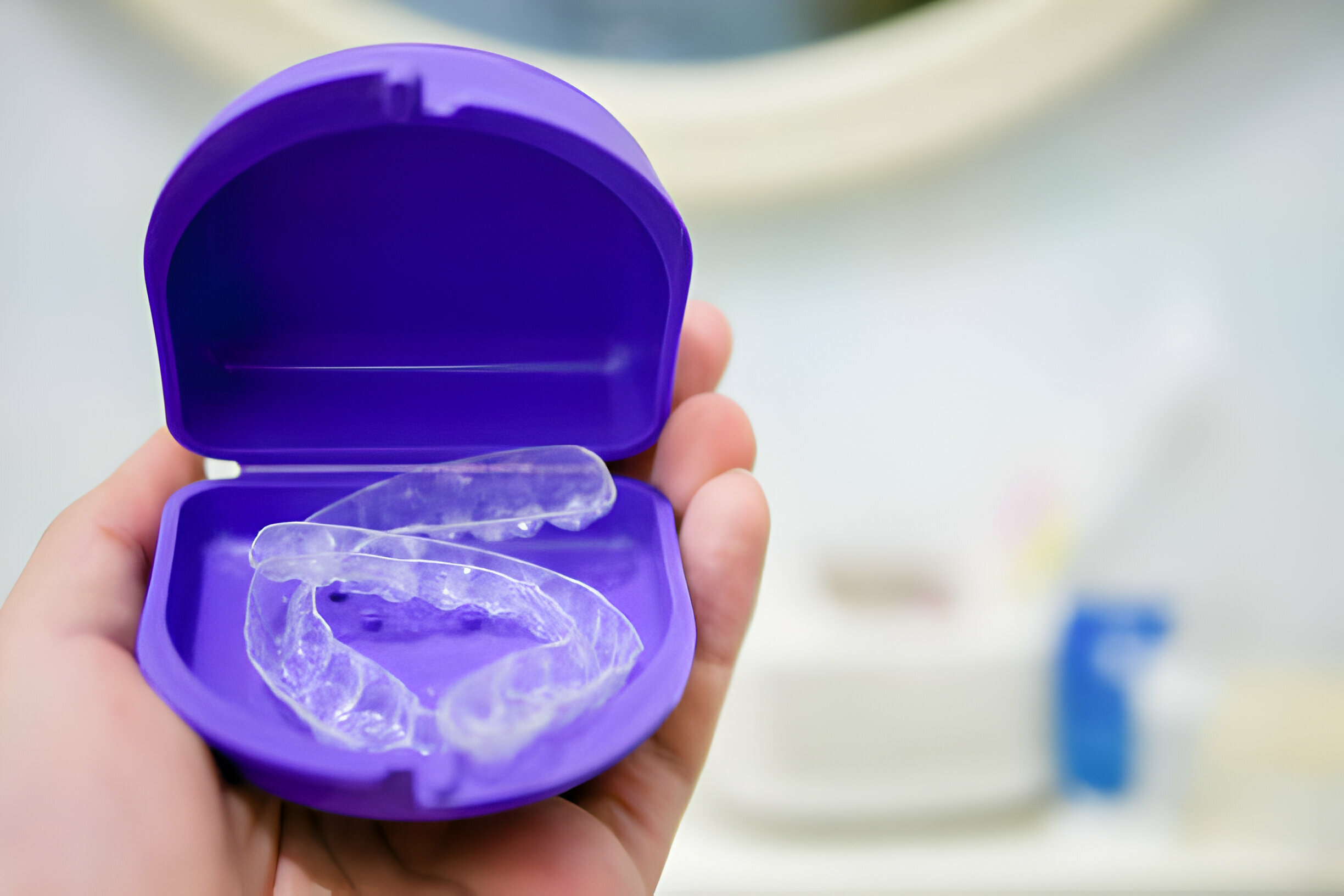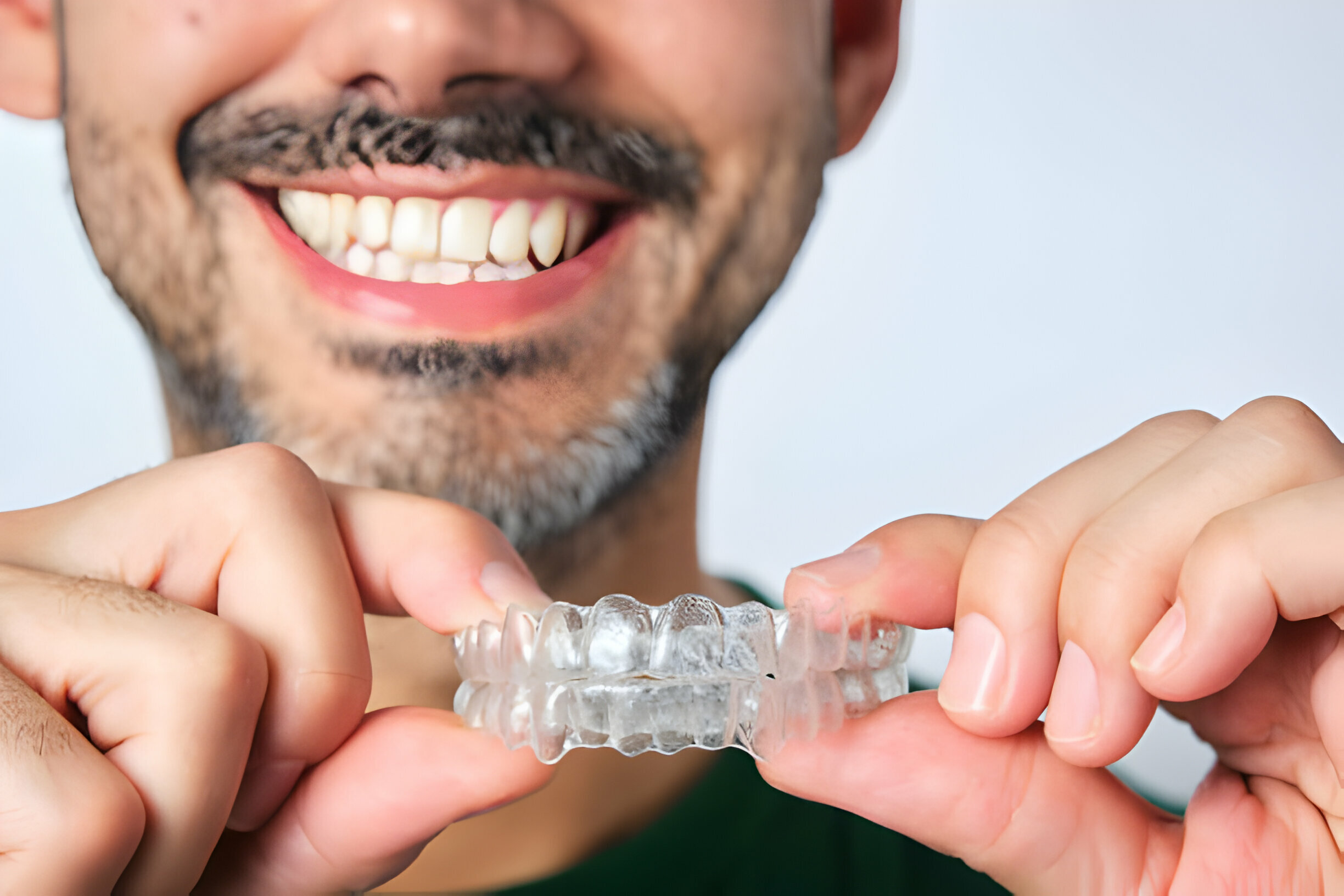Summary:
Invisalign can be very helpful in closing tooth gaps. These clear aligners can effectively correct jaw alignment and give you a perfect smile with seamless mouth and functioning abilities. But can Invisalign treatment in Lubbock help close tooth gaps?

Interestingly, yes! Invisalign treatment effectively corrects several issues in the cavity, including but not limited to gaps. Keeping the concepts of clear braces in mind, this blog will explain how Invisalign helps close tooth gaps with a deeper insight into the following topics:
- Invisalign – The Clear, Discreet Treatment Option
- Using Invisalign To Close Tooth Gap
- Factors Influencing Invisalign’s Success in Closing Gaps
- Procedure To Fix Teeth Gaps Using Invisalign
- Other Dental Issues You Can Solve Using Invisalign
Invisalign – The Clear, Discreet Treatment Option
Invisalign teeth are one of the most effective and comfortable treatments for enhancing tooth alignment. With clear braces, your dentist and their team will utilize imprints and computer-generated pictures to create transparent aligners that will move your jaw into a more aesthetically pleasing position.
Unlike the conventional brace, which uses fixed wires to “pull” teeth into alignment, Invisalign uses a series of molds that gradually push your teeth into a better position over many months. These clear braces boast an impressive success rate of 96%, and about 2.4 million patients have used them to enhance their smiles.
Using Invisalign To Close Tooth Gap
A gapped cavity is a trouble! They can affect your smile adversely while hampering your mouth’s functionality. But why worry when you have Invisalign, one of the most effective watts to reduce gaps between your teeth? Clear braces can effectively close the gaps between your smile without compromising comfort and aesthetics.
Invisalign closing gaps are not uncommon, but it is also worth noting that this tactic might not always yield favorable results. Your dentist must evaluate your teeth’ spacing needs and requirements before recommending you to braces.
Invisalign can reduce gaps resulting from tooth misalignment. But clear braces might not be the solution if you have a gap because of a missing tooth. The simple reason behind this is that Invisalign can only move your existing teeth. This explains why Invisalign’s effectiveness in gal closing is lacking for people missing a tooth or multiple teeth.
Factors Influencing Invisalign’s Success in Closing Teeth Gaps
More than one factor can leave you with gaps between your teeth. It could be anything from poor dental hygiene, genetics, injuries, or traumas. Regardless of the reason behind tooth gaps, Invisalign can help correct most of them based on some specific factors. Some of the best-known of these factors include:
Location of Tooth Gap
The exact location of the gap in your mouth can significantly influence the duration needed to correct your gaps with Invisalign. If you have an Invisalign gap in the front of your mouth, correcting it should not take very long. But things can get more complicated when you go towards the back of your mouth since front teeth are easier to move.
Severity of Tooth Gap
The next important factor is the severity of your tooth gap. The size of your gaps will determine how long it will take to enhance your teeth and smile using Invisalign. In most cases, you can close a gap between three to six millimeters in about nine months. But if your gaps are over six millimeters, you must consider alternatives since Invisalign might not greatly help here.

Number of Gaps
Another important influencing factor here is the number of gaps you have between your teeth. People with multiple gaps in their cavities generally must wait longer for Invisalign braces to reduce the gap between them. In most cases, people with two or more gaps might need more time to correct their teeth’s gaps and alignment using Invisalign for gaps.
Shape Of Your Teeth
The final factor that influences how long it takes to close teeth gaps using Invisalign is the shape of your teeth. People with rectangular or square teeth might need more time to reduce teeth gaps with Invisalign than those with teeth of other shapes. The simple logic behind this is that rectangle and square teeth have more surface area in contact, making it more challenging to move them and get the right smile.
Procedure To Fix Teeth Gaps Using Invisalign
The overall procedure for getting Invisalign aligners to reduce teeth gaps is not very different from the procedure of using metal braces. The Invisalign dentist in Lubbock will follow a couple of simple steps to get your cavity back in shape.
Step 1: Consultation
Of course, you must first visit a trusted dentist at your convenience to close teeth gaps. The dentist will run some tests to get your teeth’s impression and determine if Invisalign can help reduce your gaps.
Step 2: Treatment Plan
This is the next step: the dentist will take your teeth’s impression and create a treatment plan accordingly. They will provide you with a set of Invisalign aligners; you must wear each for at least two weeks before replacing them with the next set.
Step 3: Plan in Action
The third step is to finally put the plan into action and place the aligners to move your teeth into the right place. Your dentist will monitor your progress, and once the gaps are closed properly, they will ask you to wear a retainer to keep your teeth in place.

Other Dental Issues You Can Solve Using Invisalign
Apart from closing gaps between teeth, Invisalign also helps resolve many other dental issues. Some of the best-known dental issues you can solve using Invisalign include:
- Teeth Crowding: Crowded teeth are one of the most common dental problems; leaving them untreated can result in gum disease or tooth decay.
- Cross Bite: This is a condition where your upper teeth bite down inside your lower teeth, making it difficult to chew food properly and eventually leading to tooth decay.
- Open Bite: Open bite is a condition where your upper and lower teeth do not touch down while biting, making it difficult to speak and chew properly.
- Overbite: This is a condition where your upper bite over the lower teeth, resulting in faster tooth wear and adversely affecting your smile.
- Crooked Teeth: This is a relatively common dental issue where your teeth are crooked from the start or for other reasons. This makes it difficult to clean your teeth properly and increases the chances of developing gum diseases and tooth decay.
- Underbite: Underbite is a condition where lower teeth bite in front of your upper teeth, making it difficult to chew food and speak.
Takeaway
- Invisalign has an outstanding 96% success rate, and almost 2.4 million people have utilized it to improve their smiles. It helps fill the gaps in your smile while maintaining comfort and aesthetics.
- Your Invisalign tooth gap location, severity, number of gaps, and the shape of your teeth are some factors that influence the efficiency of closing gaps with clear aligners.
- Crooked, overbite, underbite, crowded, crossbite, and open bite are some of the most common dental problems you can address using Invisalign.
- Invisalign is the best way to treat your smile discreetly. Learn more about the appliance with our experts at Lubbock Dental Care & Orthodontics today!

